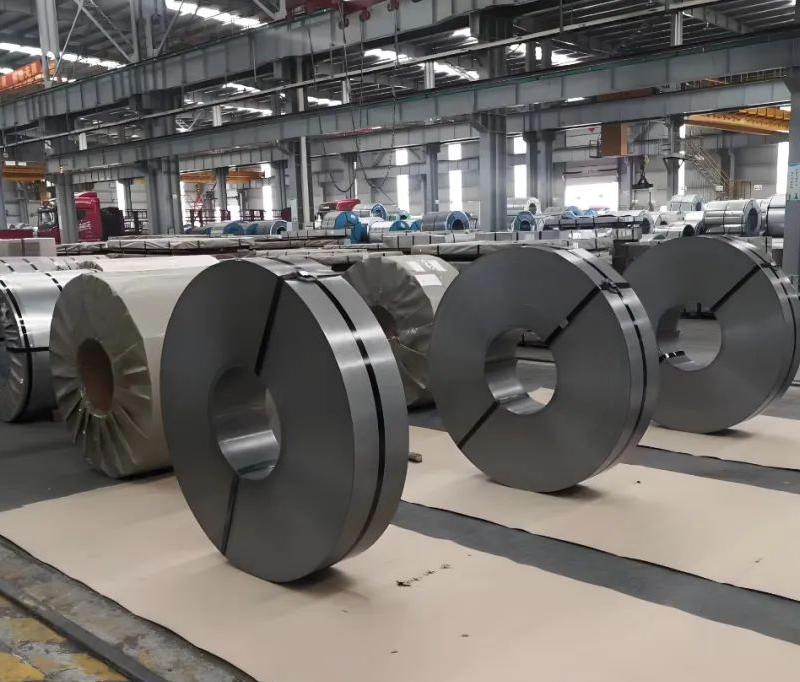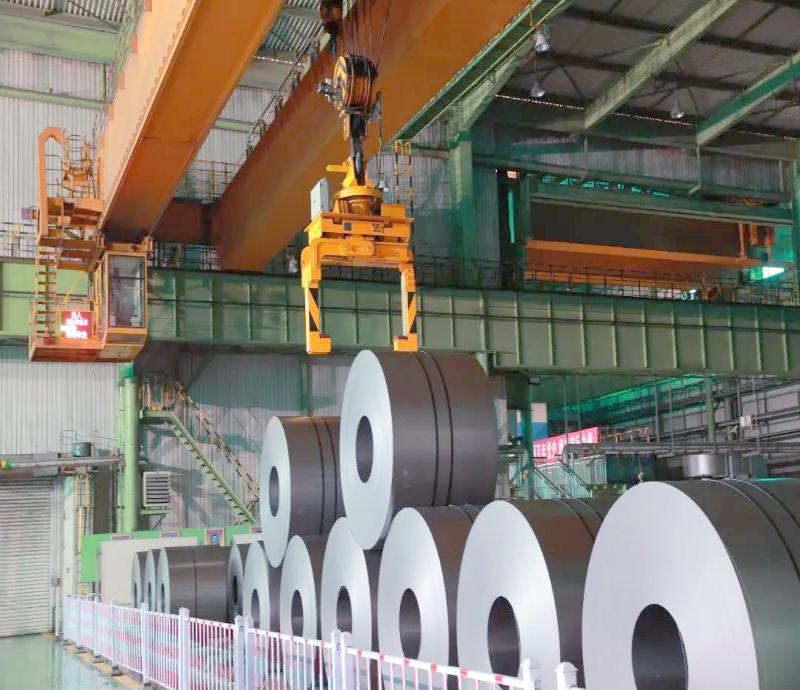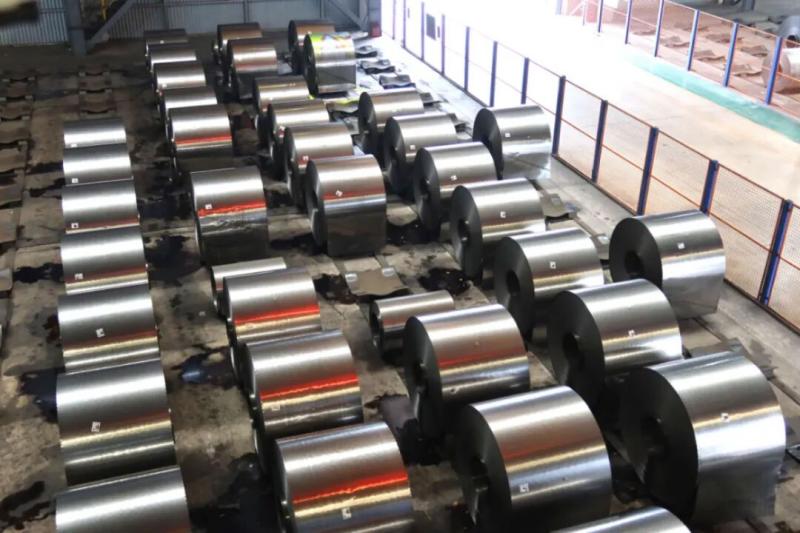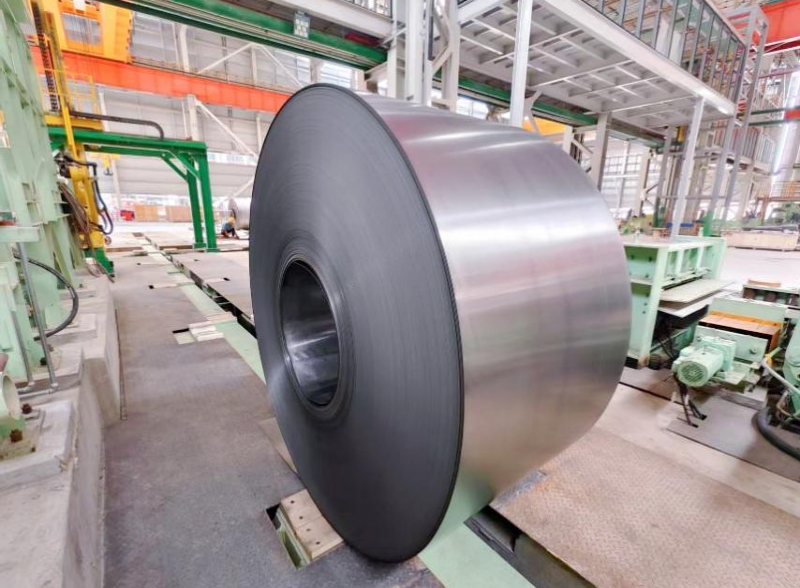
In the field of power transmission and conversion, transformers play an indispensable role, and silicon steel, as a key material for transformer cores, directly determines the energy efficiency and reliability of transformers.
In the power industry, silicon steel is primarily divided into two major categories: oriented silicon steel and non-oriented silicon steel. Although both are silicon-iron alloys, they exhibit significant differences in performance, production processes, and application fields.

Grain orientation:
The internal grain arrangement of oriented silicon steel is highly ordered, much like a well-trained army, with all grains aligned in the same direction—the rolling direction. This regular arrangement gives the material strong directional magnetism.
In the rolling direction, oriented silicon steel exhibits extremely low iron loss values and exceptionally high magnetic permeability, enabling the generation of high magnetic flux density under a certain magnetizing field.
The grains of non-oriented silicon steel resemble a crowd strolling at random, exhibiting an irregularly oriented distribution. This disordered structure results in relatively balanced magnetic properties in all directions, but without any particularly outstanding orientation.

Chemical composition:
Although both are low carbon silicon iron alloys, there is a significant difference in their silicon content. The silicon content of oriented silicon steel is relatively high, usually around 3%, and it requires a low content of oxide inclusions in the steel, as well as the presence of certain inhibitors (such as MnS, AlN).
The silicon content range of non oriented silicon steel is relatively wide, usually between 0.8% and 4.8%. Some sources also mention that its silicon content is between 0.5% and 3.0%, and sometimes considering the aluminum content, the total silicon aluminum content can be between 1.8% and 4.0%.
Performance characteristics:
The biggest advantage of oriented silicon steel is its strong directionality in magnetic properties. In the rolling direction, it has the lowest iron loss value, the highest magnetic permeability, and a high magnetic induction value under a certain magnetization field.
This gives oriented silicon steel unparalleled magnetic advantages in specific directions. Non oriented silicon steel, due to its irregular arrangement of grains, has relatively uniform magnetic properties in all directions, but does not have particularly prominent directionality.
It increases the electrical resistivity and maximum magnetic permeability of iron by adding silicon, reducing coercivity, iron core loss (iron loss), and magnetic aging.

Production process:
The production process of oriented silicon steel is extremely complex, requiring the use of oxygen converter melting. The steel billet is hot-rolled, normalized, cold-rolled, intermediate annealed, and secondary cold-rolled to form a finished thickness, then subjected to decarburization annealing and high-temperature annealing, and finally coated with an insulation layer.
This complex production process ensures the directional arrangement of grains, but also increases production costs. The production of non oriented silicon steel is relatively simple, mainly including pre desulfurization of molten iron, and secondary desulfurization by adding CaO+CaF flux or rare earth elements and calcium during converter blowing.
Boiling molten steel undergoes vacuum treatment for decarburization before further desulfurization. Choose ferrosilicon with low titanium and zirconium content for alloying.
Application fields:
Oriented silicon steel, due to its excellent unidirectional magnetic properties, is mainly used in the manufacturing of transformer cores, especially in large power transformers. They are also used for iron cores in power transformers, pulse transformers, and magnetic amplifiers.
Non oriented silicon steel is mainly used to manufacture rotating equipment, such as the stator and rotor cores of generators and motors. This is because a rotating magnetic field requires good magnetic properties in all directions.
In addition, non oriented silicon steel is widely used in the manufacturing of iron cores for household appliances (such as electric fans, refrigerators, etc.) and small electrical appliances.

Cost and Efficiency:
The production process of oriented silicon steel is complex and requires special heat treatment, resulting in high costs. But its excellent magnetic properties can significantly reduce the no-load losses of transformers and improve energy efficiency.
Replacing hot-rolled or low-grade cold-rolled strips with cold-rolled orientation strips can reduce transformer energy consumption by 45% -50%, and make transformer performance more reliable. The production process of non oriented silicon steel is relatively simple and the cost is low.
It has the characteristics of smooth surface, uniform thickness, high stacking coefficient, good punching performance, and higher magnetic induction and lower iron loss than hot-rolled electrical steel strips.
With the development of the new energy industry, the demand for high-grade non oriented silicon steel has significantly increased. In the future, both oriented and non oriented silicon steel will continue to evolve towards lower iron loss, higher magnetic induction, and greater energy efficiency and environmental protection.
Choosing oriented silicon steel or non oriented silicon steel is no longer a simple material selection, but has become an important criterion for measuring the technical strength and market positioning of transformer enterprises.
Hunan Hongwang silicon steel project officially starts production
2023-03-28Hongwang's Summer Special is coming~
2023-07-31Hongwang Investment Group ranks 485th among 2020 Top 500 Chinese Enterprises
2020-10-10High EQ Person in Hongwang
2021-06-17The first roll of Fujian Hongwang's 400 series products was officially put into the production line.
2023-05-16Hongwang hot annealing& pickling line combine in line 3-stand tandem mill trial production succeed
2020-10-30






